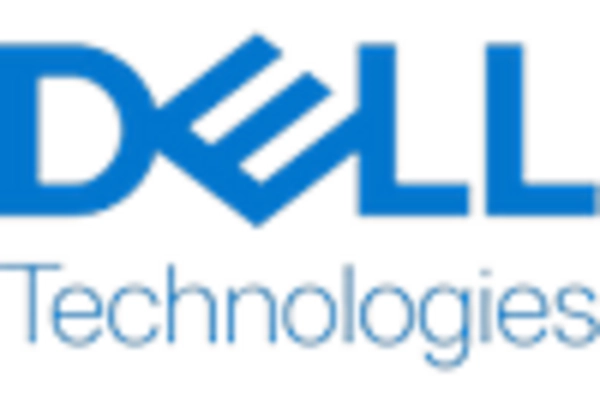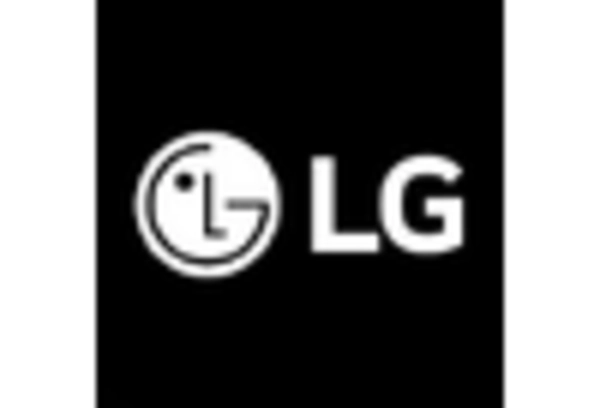The gaming monitors market exhibits a dynamic competitive landscape, characterized by rapid technological advancements and evolving consumer preferences. Key players such as ASUS (TW), Dell (US), and Samsung (KR) are at the forefront, leveraging innovation and strategic partnerships to enhance their market positions. ASUS (TW) focuses on high-performance gaming monitors, emphasizing features like refresh rates and adaptive sync technologies, which appeal to competitive gamers. Dell (US) has adopted a strategy centered on sustainability, integrating eco-friendly materials into their product lines, while Samsung (KR) continues to push the envelope with cutting-edge display technologies, including QLED and ultra-wide formats, thereby shaping the competitive environment through differentiation and technological prowess.
In terms of business tactics, companies are increasingly localizing manufacturing to mitigate supply chain disruptions and optimize logistics. The market structure appears moderately fragmented, with several players vying for market share, yet the influence of major brands remains substantial. This competitive structure allows for a diverse range of products, catering to various consumer segments, from casual gamers to professional eSports athletes.
In October 2025, ASUS (TW) announced the launch of its latest ROG Swift OLED gaming monitor, which features a 240 Hz refresh rate and a 0.1 ms response time. This strategic move underscores ASUS's commitment to innovation, aiming to capture the attention of high-end gamers seeking superior performance. The introduction of this monitor is likely to enhance ASUS's competitive edge, as it aligns with the growing demand for high-refresh-rate displays in the gaming community.
In September 2025, Dell (US) unveiled its new line of Alienware monitors, which incorporate advanced AI-driven features for personalized gaming experiences. This initiative reflects Dell's focus on integrating artificial intelligence into its product offerings, potentially setting a new standard for user engagement and customization in gaming monitors. Such advancements may not only attract tech-savvy consumers but also position Dell as a leader in the integration of AI within gaming hardware.
In August 2025, Samsung (KR) expanded its partnership with NVIDIA (US) to enhance G-SYNC compatibility across its gaming monitor range. This collaboration is indicative of Samsung's strategy to align with industry leaders, ensuring that its products meet the high-performance standards expected by gamers. By enhancing compatibility with NVIDIA's technology, Samsung is likely to strengthen its market position and appeal to a broader audience of gamers who prioritize seamless performance.
As of November 2025, current trends in the gaming monitors market include a pronounced shift towards digitalization, sustainability, and AI integration. Strategic alliances, such as those between hardware manufacturers and software developers, are increasingly shaping the competitive landscape. The evolution of competitive differentiation appears to be moving away from price-based competition towards a focus on innovation, technological advancements, and supply chain reliability. This shift suggests that companies that prioritize these aspects may be better positioned to thrive in the future.
















Leave a Comment